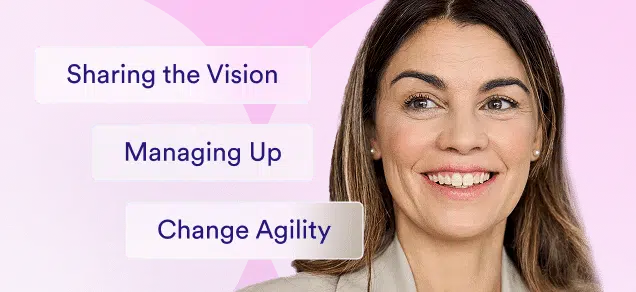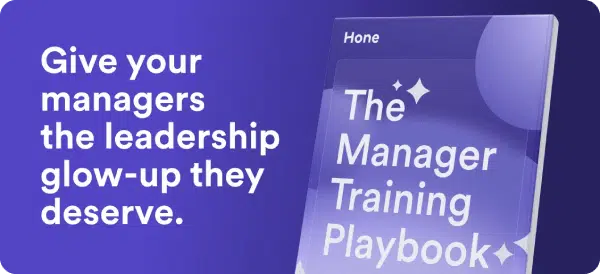Let’s be honest: most of us think we’re great listeners. We nod, we make eye contact, we throw in the occasional “Yeah, totally.” But in reality? We’re often just waiting for our turn to speak. We listen to respond, not to understand. And according to Jeff Wetzler, leadership and learning expert, that’s a big problem — and he’s teaching you how to ask better questions.
Because the truth is, people aren’t telling us everything. Think about it — how many times have you walked out of a meeting, only to have a coworker say, “I actually disagreed with that decision, but I didn’t want to say anything”? Or had an employee tell you months later that they were struggling, even though you thought everything was fine?
Our colleagues, our teams, even our leaders — there’s a whole world of unspoken thoughts, ideas, and concerns swirling in their heads that never make it into words. Why? Because we’re not creating the space for them to share.
So, what if we could change that? What if we could unlock the conversations that truly matter? Wetzler believes we can — and he’s got a roadmap to help us do it.
Hidden barriers: Why people don’t speak up at work
In most workplaces, silence is often mistaken for agreement.
You’ve seen it before: a leader proposes a new initiative in a meeting. Nobody speaks up. The leader assumes that means everyone is on board. But in reality, people may have major concerns — concerns they’ll only whisper about in private conversations later.
So why do people hold back? Wetzler identifies several key reasons:
- Fear of the impact: Employees may worry that speaking up could have negative consequences — on themselves (looking difficult or risking their job), on you (causing tension or frustration), or on the relationship (damaging trust or rapport).
- Lack of time and energy: With packed schedules and competing priorities, people may feel they don’t have the bandwidth to engage in discussions that could be challenging or draining.
- Not having the right words: Sometimes people simply don’t know how to articulate their concerns, so they say nothing at all.
- The assumption that it won’t matter: If employees don’t believe their input will lead to change or they believe you don’t want to hear it, they won’t bother sharing.
The consequences of this silence are huge. Poor decisions get made because leaders aren’t getting the full picture. Innovation stalls because the best ideas never surface. And teams operate under a false sense of alignment — until the cracks start to show.
So how do we fix this? Wetzler’s answer is The ASK Approach, a five-step framework for getting people to open up and share what really matters.
The ASK Approach: How to ask better questions and unlock honest conversations
Most of us assume that if people had something important to say, they’d just say it. But Wetzler flips that thinking on its head: if we’re not getting honest input, it’s on us to create the right conditions for it.
Here’s how:
Step 1: Choose curiosity over certainty.
One of the biggest communication mistakes we make is assuming we already know what others think.
Think about a manager who rolls out a big organizational change and assumes their team is fully on board. They don’t check in, because in their mind, no one has raised concerns — so there must not be any. But in reality? The team may be full of doubts, frustrations, or great alternative ideas that never get voiced.
Curiosity means checking our assumptions at the door and instead asking, “What am I missing?”
It’s about replacing certainty with questions:
- “What’s one thing you wish we’d talked about more?”
- “What’s the biggest risk I might not be seeing?”
- “How do you really feel about this?”
When leaders approach conversations with a genuine desire to learn, people pick up on that — and they’re much more likely to open up.
Step 2: Make it safe to speak up.
People won’t share their true thoughts unless they feel safe doing so.
In many workplaces, employees are trained — whether explicitly or subtly — that honesty isn’t always rewarded. Maybe they’ve seen a coworker get shut down for disagreeing. Maybe they’ve been in meetings where only the loudest voices get heard. Maybe they’ve spoken up before and nothing changed.
To create psychological safety, leaders need to:
- Make your intent clear – If you’re asking for feedback, say explicitly, “I genuinely want to know what you think — I won’t be upset, and your honesty is valuable.”
- Show appreciation for dissent – Instead of shutting down opposing views, thank people for sharing them. (“I hadn’t thought about it that way — tell me more.”)
- Avoid knee-jerk defensiveness – If an employee tells you something tough to hear, resist the urge to justify or explain. Just listen.
Making it safe to speak up isn’t about saying people can be honest — it’s about proving it through action.
Step 3: Pose quality questions to get quality answers.
Not all questions are created equal. Some barely scratch the surface, while others unlock insights that would have otherwise remained hidden. The key? Framing your questions in a way that encourages depth, honesty, and reflection.
The problem with many workplace conversations is that they’re filled with leading, vague, or binary questions that limit responses.
For example:
❌ “Are you on board with this?” → This assumes agreement and discourages dissent.
✅ “What concerns, if any, do you have about this?” → This invites open discussion.
Or:
❌ “Is everything going okay?” → People will usually say “yes” just to avoid conflict.
✅ “What’s something I might not be seeing?” → This creates space for honesty.
Great questions do three things:
- They are open-ended. Instead of yes/no, they invite a thoughtful response.
- They are neutral. They don’t lead people toward a “preferred” answer.
- They go deeper. They encourage reflection, not just a surface-level reply.
Want to go even further? Try these three types of questions to get richer insights:
- Clarifying questions → “Can you help me understand what led you to that conclusion?”
- Perspective-shifting questions → “If you were in my shoes, what would you do differently?”
- Exploratory questions → “What’s one thing we haven’t considered yet?”
By shifting from shallow, transactional questions to deep, curiosity-driven ones, you signal that you genuinely care about what others think—and that you’re willing to act on it.
Step 4: Listen to learn, not just to respond.
Most of us listen with one goal in mind: figuring out what to say next. But truly effective leaders listen with a different goal: understanding the other person’s perspective before responding.
It’s easy to assume that once you’ve asked a great question, you’re done. But the real magic happens in how you receive and interpret the response. Are you actually hearing what’s being said, or are you filtering it through your own biases and assumptions?
To practice active, open-ended listening, try these strategies:
- Paraphrase what you heard: “It sounds like what you’re saying is…” This ensures you understood correctly and makes the other person feel heard.
- Resist the urge to interrupt: Silence is uncomfortable, but sometimes the most valuable insights come after a pause. Let people think.
- Ask follow-up questions: “Can you tell me more about what led you to that conclusion?” or “What else should I know about this?” Deep diving shows you genuinely care.
Why this matters: When people feel deeply heard, they open up more, and that’s where the best ideas, concerns, and solutions emerge. Seeking to understand — rather than to debate or fix — creates a culture of trust and psychological safety, where employees feel valued and respected.
Step 5: Reflect and reconnect to keep the conversation alive.
A great conversation doesn’t end when the talking stops. True listening means reflecting on what was shared and following up in a way that proves it mattered.
After an important discussion, take a moment to process:
- What stood out most?
- What assumptions of mine were challenged?
- What should I do with this information?
Then, reconnect. A simple check-in — “I’ve been thinking about our conversation, and I wanted to follow up” — reinforces that you were truly listening. If feedback led to a change, acknowledge it. If it didn’t, be transparent about why while making it clear their input was valued.
When people see their voices driving real impact — or at least being taken seriously — they’re far more likely to keep sharing. And that’s how you create a culture of trust, openness, and better decisions.
The bottom line: The best ideas are still unspoken — until you learn how to ask better questions
The biggest mistake we make? Assuming we already know. Great leaders, great teams, and great cultures are built on one simple but powerful skill: curious, active listening. But at the heart of it all? Trust.
If people don’t trust that their voices will be heard without judgment or backlash, they won’t share. If they don’t trust that their input actually matters, they won’t speak up. And without trust, even the best communication techniques fall flat.
Building trust in the workplace isn’t just about being approachable — it’s about consistently proving that openness is valued. It’s about showing, through your actions, that speaking up leads to real conversations and real change.
For more insights on creating a culture of openness, explore the Ask Approach website or dive into the strategies from Jeff’s book on Amazon.
Want to take your trust-building efforts even further? Check out Hone’s Trust-Building in the Workplace Template — a practical guide to fostering psychological safety, strengthening relationships, and creating a workplace where honesty thrives.
Because at the end of the day, the most important conversations are the ones we’re not having — yet. What’s one question you can ask today that might unlock the answers you need?











